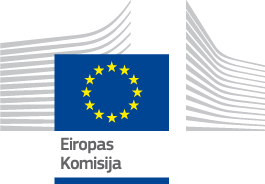

Country Factsheet
Portugal has 15 FLAGs, 12 of them in coastal areas of continental Portugal and three on the Azores archipelago, situated in the Atlantic Ocean. The main challenges that CLLD addresses in Portugal’s fisheries areas are low educational level of fishermen; decreased attractiveness of fisheries for young people, mainly due to low income and limited alternative employment opportunities in fisheries communities; declining competitiveness of the fishing industry; conflicting demands in the coastal areas; global warming and resource depletion.
Portugal has a total area of 92 090 km2 and is geographically located on the west coast of Europe on the Iberian Peninsula. It boarders Spain on the north and east, and the Atlantic Ocean for 942 km on the south and west. In addition to the continental territory, Portugal has two archipelagos - the Azores and Madeira, situated in the Atlantic Ocean.
In 2013, employment in fisheries comprised about 17 875 jobs, corresponding to 9 307 full-time equivalents (FTEs) in the catching sector, 6 823 jobs or 6 308 FTEs in the fish processing industry and 2 572 workers, or 2 083 FTEs in aquaculture. Maritime activities generated a direct contribution to Gross Domestic Product (GDP) of 2% in 2010 rising to about 3% in 2014.
A two page summary of the Operational Programme including contact details of the Managing Authority is available at the following link.
Contact details of the managing authority can be found here.
More information about national EMFF programmes can be found here.
During Axis 4 (EFF), Portugal had seven coastal FLAGs, covering around 70% of the coastal area of the mainland: Litoral Norte; Região de Aveiro; Mondego Mar; Oeste; AlémTejo; Barlavento do Algarve; Sotavento do Algarve. The main achievements of Axis 4 were the following:
The main challenges that community-led local development will have to address in Portugal’s fisheries areas in the coming years are:
To cope with these challenges, the objectives for CLLD in Portugal for 2014-2020 are:
In the 2014-2020 programming period, CLLD covers almost the entire coastal area of mainland Portugal (over 95%) and includes all fisheries communities along the coast, in coastal lagoons and in estuaries. This is an important change compared to the previous period, where only around 70% of the coastal areas was covered. There will be FLAGs on the Azores archipelago, the selection process is still ongoing. The total CLLD budget has been increased from €21.5 million to €41,2 million, and due to the increasing number of FLAGs from 7 to 15 (including 3 FLAGs in the Azores), the average FLAG budget is expected to be between €2,75 million and €3.43 million (compared to €3,07 million in 2007-2013).
Portugal is implementing a multi-fund approach for Fisheries CLLD on the mainland. Apart from the EMFF (€35 million), all FLAGs have available funding from ESF (€7.8 million) and ERDF (€6.5 million). There is no formal integration with rural or urban LAGs, who implement their own multi-funded strategies (EAFRD/ESRDF/ESF and ERDF/ESF) respectively.
The FLAGs on the Azores implement strategies that are only funded by the EMFF.
During the 2007-2013 period an informal National Network operated without a specific budget, and chaired by a different FLAG every four months. Members were the Managing Authorities, all FLAGs, and all Regional General-Directorates for Agriculture and Fisheries. Other entities were invited to participate in the meetings whenever necessary.
As for the 2014-2020 period, the Managing Authority will support an informal National Network in the same way as before by financing specific activities of the network from Technical Assistance (starting at the end of 2016), along with hiring external experts on ad hoc basis.
The tasks of the NN will be:
Click here for the National Network contact details.
FLAGs in Portugal mainland cover almost all coastal municipalities located in the west and south.
The Ministry for the Sea is responsible for selecting the FLAGs in Mainland Portugal. The call for FLAGs has been launched in mid-November 2014, the final approval of the FLAGs took place by end August 2015 and the strategies were approved by end November 2015. The FLAGs on the Azores were selected in December 2017.
| Code | Name | Region | Surface area (km²) | Population | Population density (per km²) | Employment in fisheries* |
|---|---|---|---|---|---|---|
| PT201 | Litoral Norte FLAG | 239 | 98960 | 414 | 481 | |
| PT202 | Area Metropolitana do Porto - AMP FLAG | 114 | 180726 | 1584 | 2402 | |
| PT203 | Região de Aveiro FLAG | Aveiro |
635 | 188011 | 296 | 2900 |
| PT204 | Mondego Mar FLAG | 512 | 71068 | 139 | 6440 | |
| PT206 | Oeste FLAG | Oeste |
966 | 73107 | 169 | 1482 |
| PT207 | ecoMAR FLAG | 154 | 37894 | 246 | 50 | |
| PT208 | Ericeira/Cascais FLAG | Lisbon |
95 | 80860 | 853 | 110 |
| PT209 | ADREPES Costeiro FLAG | Lisbon |
864 | 195457 | 226 | 1626 |
| PT210 | Litoral Alentejo FLAG | 1387 | 61045 | 44 | 325 | |
| PT211 | Barlavento do Algarve FLAG | 872 | 154832 | 178 | 780 | |
| PT212 | Sotavento do Algarve FLAG | 1492 | 181277 | 121 | 4810 | |
| PT214 | Graciosa and Terceira | Azores |
404 | 50150 | 124 | 464 |
| PT215 | Adeliacor FLAG | Azores |
1025 | 44371 | 44 | 1110 |
| PT205 | AdaeMar FLAG | Leiria |
359 | 38993 | 109 | 14 |